Scanning through some photo files, I found several photos of Amish farms in December. These photos were all taken in or near Holmes County, Ohio.



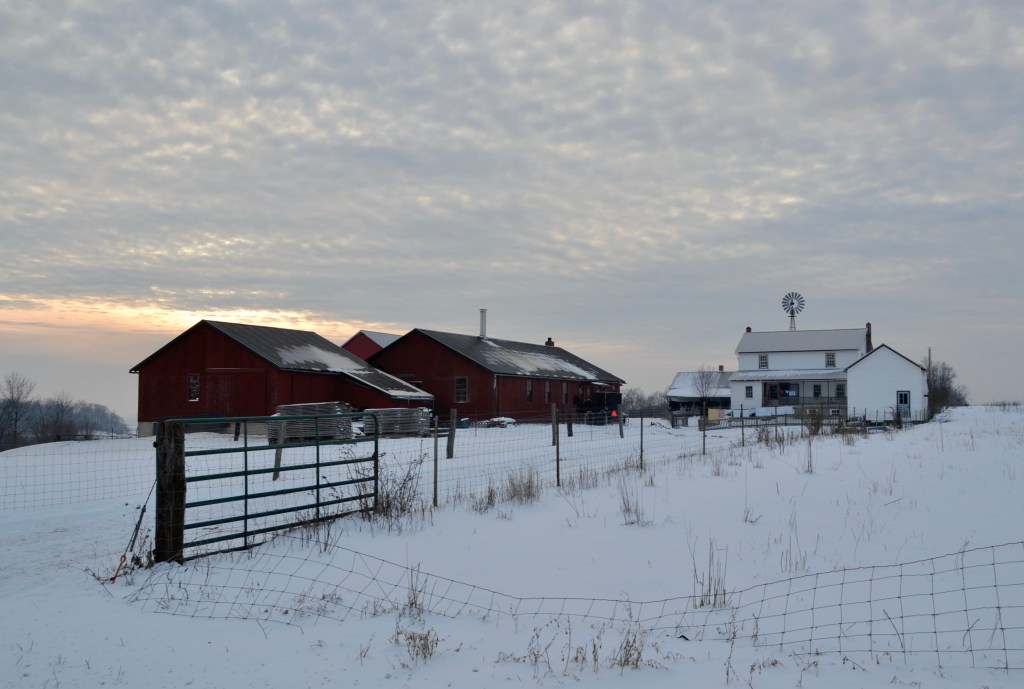
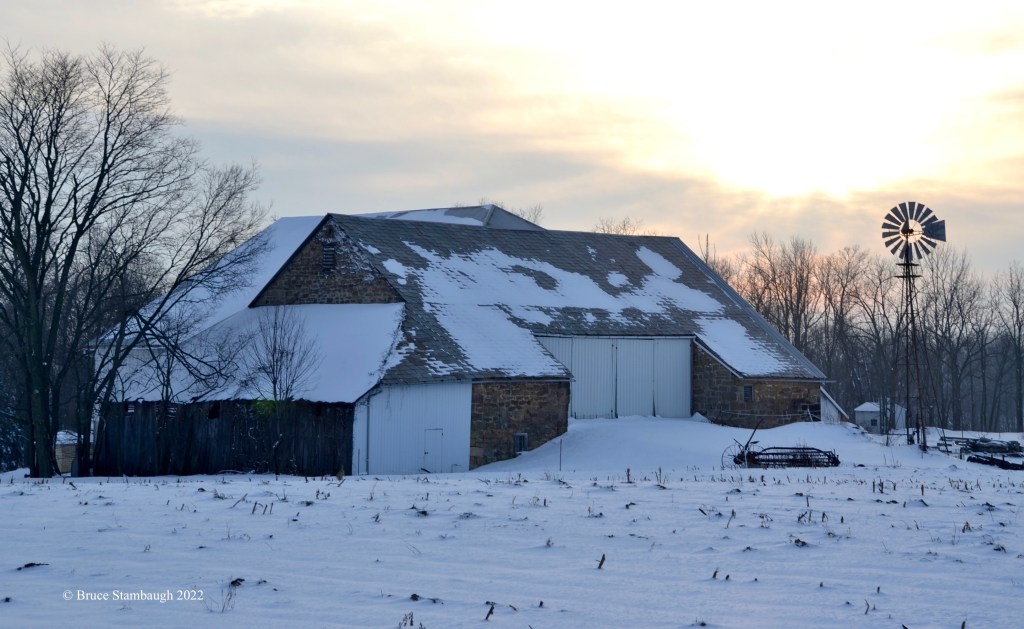



Please click on the photos to enlarge them.
© Bruce Stambaugh 2022
The calendar didn’t change, but the weather sure did.

August came early this year. The calendar didn’t change, but the weather sure did.
The three H’s customarily associated with August, hot, humid, and hazy, have been around off and on since this June. Unfortunately, the dreaded trio has been mostly “on” all across the continent and beyond.
The results haven’t been pretty or even healthy. Record high temperatures fed massive wildfires, more typical for the fall months. The fires have been burning all across the West and in several Canadian provinces. A wildfire completely obliterated the small town of Lytton, B.C.
The wildfires have fed the brilliant sunrises and sunsets in recent days. Brisk winds aloft have spread soot particles eastward, creating that giant orange ball in the sky that we usually can’t look at directly. The August haze is extra heavy from Maine to Florida.

August’s weather seemed both more predictable and tolerable a half-century ago. Global warming and climate change weren’t household phrases back then. They are now.
In those days, the school year ran from the day after Labor Day until Memorial Day weekend. The school district seldom used up the permitted allotment of snow days. So, we knew we had the whole summer season to enjoy.
As a youngster, I always welcomed August even though it was the last month of school vacation. The neighborhood gang of baby boomers took the hot, hazy, and humid weather in stride.
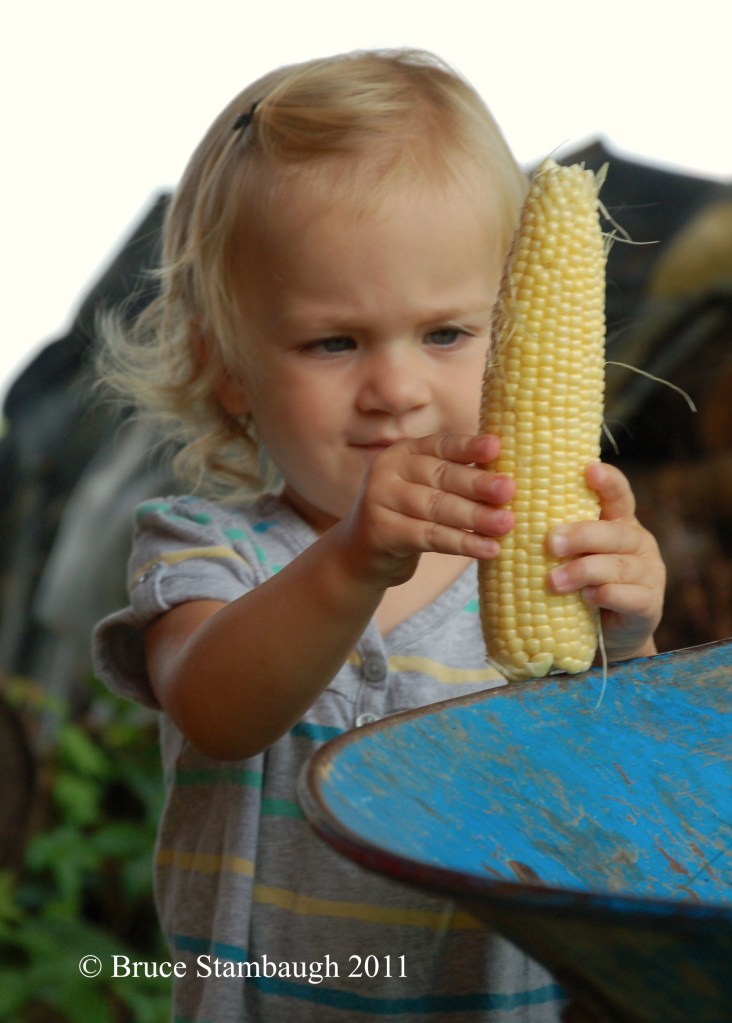
You are never too young to help husk corn.
We were content to sit beneath giant shade trees and play cards and board games instead of more strenuous adventures. We saved our more energetic shenanigans for cooler evenings. I’ll skip the details since the statutes of limitations haven’t expired. No harm to life or property occurred, however.
August always gave us suburban kids pause. August was our reality check. It forewarned us to use our last remaining days of freedom wisely. We usually didn’t.
A few of us, of course, had jobs associated with youth, like paper routes and mowing lawns. My older brother and I both delivered newspapers. In those days, I had ink on my fingers and not in my veins.
County fairs and street fairs began in earnest. Our county fair was always the last week of August and ended on Labor Day. When the fair closed, the schoolhouse doors opened.

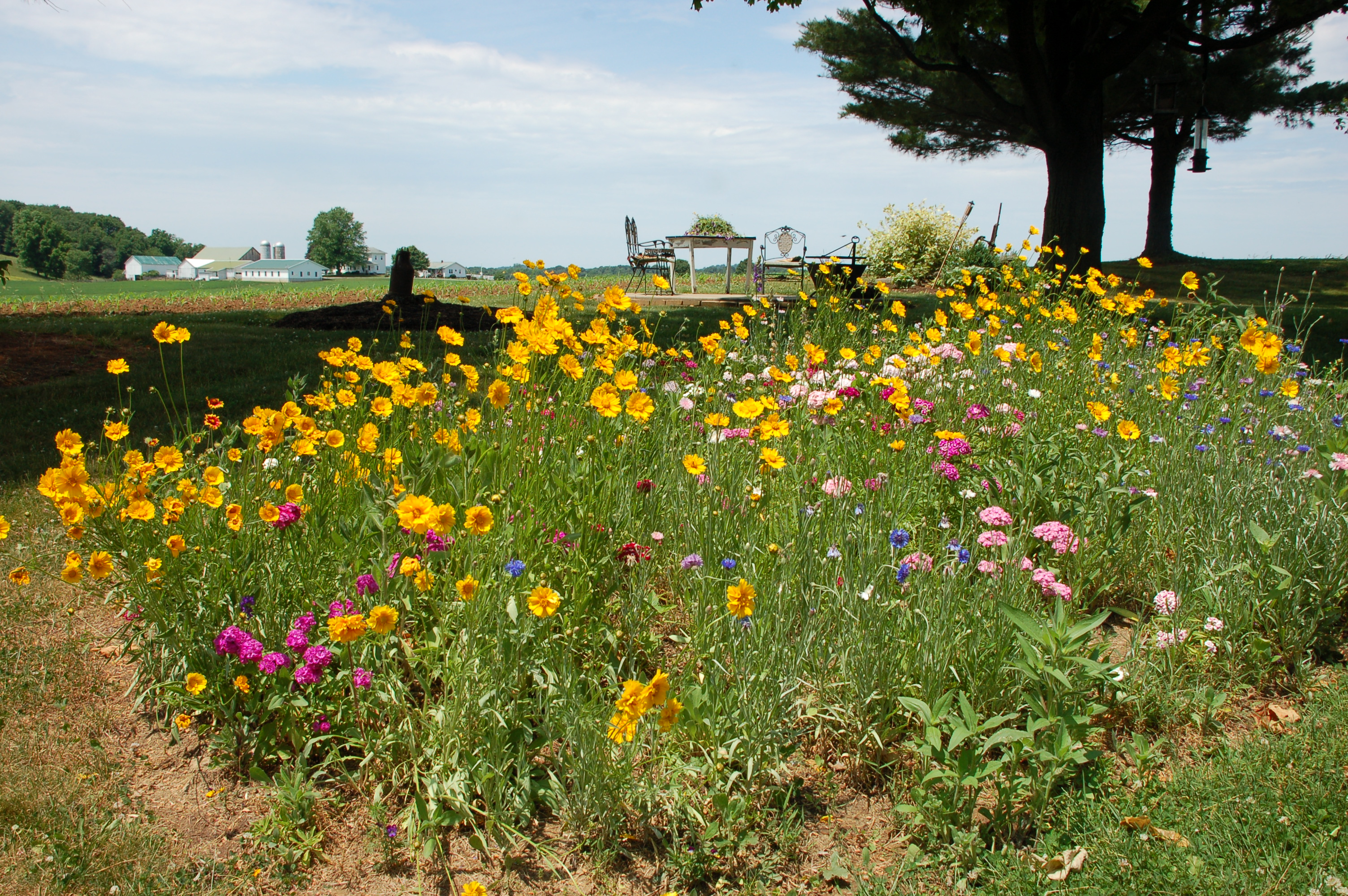

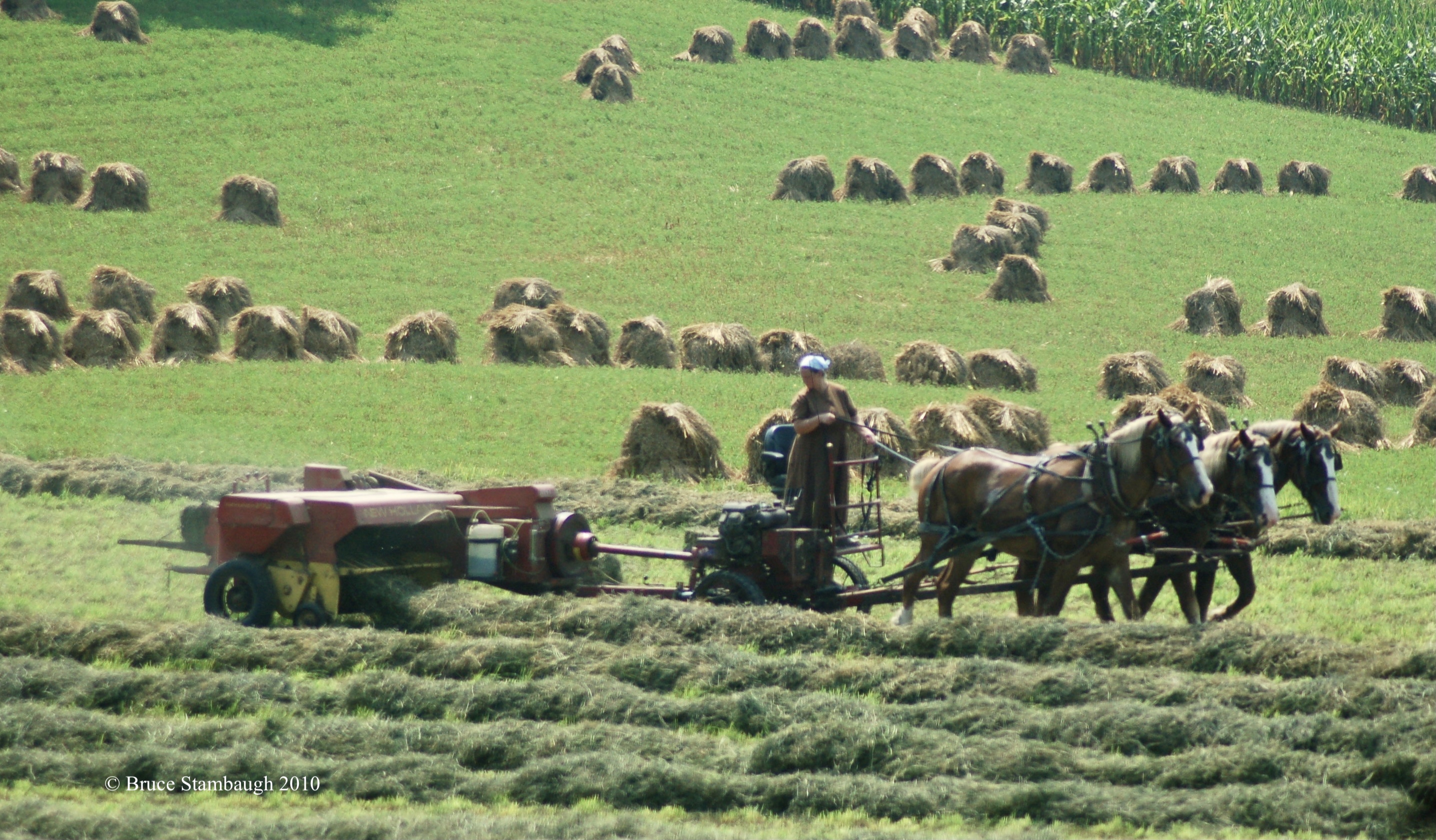
Our father usually grew a garden well away from our suburban home. After supper, my siblings and I crowded into the family car, and off we would go to help hoe, weed, and hopefully pick my favorite vegetable, sweet corn.
If we had a bumper crop, we headed to a strip mall parking lot, popped the trunk, and sold our excess at a dollar a dozen. Dad usually threw in an extra ear for free, the gardener’s equivalent of a baker’s dozen.
Back home, our dear mother had the pressure cooker ready. All we had to do was husk the corn. It’s another job that I still relish. My wife says I will be applying that apt skill as soon as the bi-colored corn is ripe.
Occasionally, Dad would also load the family into the car, and we headed to Holmes County. I always admired the platoon of golden wheat shocks standing at attention in the fields of Amish farmers.
I had no idea then that I would be spending most of my adult life living there. It served as a foretaste of many good things to come for me.
I look back on my lifetime of Augusts with pleasant memories. None of the three H’s can bake, wilt, or obscure them.
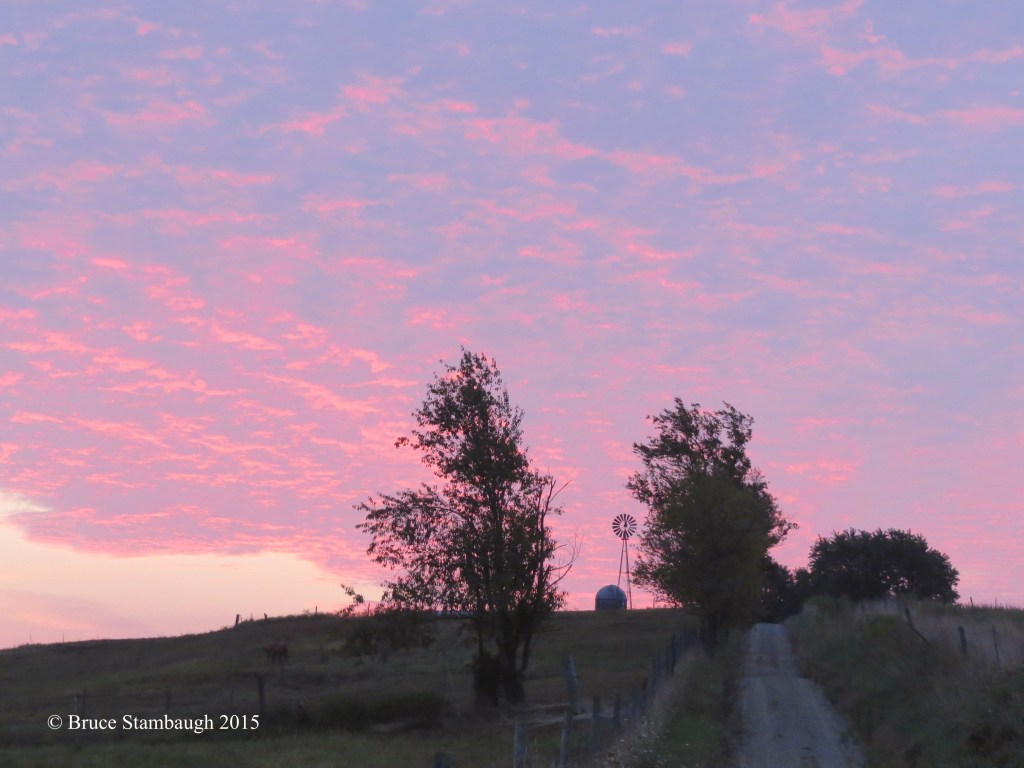
© Bruce Stambaugh 2021
There is no greater visible realization of change in the Amish culture than on the farm, at least for the mainline Old Order Amish. Mechanization is the most obvious.
The grain harvest, wheat, oats, and corn, required manpower. Community circles were formed to help with bringing in the crops. The men and boys went from one farm to another until everyone’s harvests were completed. This happened over a period of weeks.
Because agriculture is no longer the number one source of income for most Amish families, the rules have changed to make the harvest more efficient, requiring fewer sets of hands. The majority of Amish men now work in shops, either on their own property or away from home. Or they work on construction crews, and in local businesses. To make it easier for those still engaged in farming, which is less than 10% of the population, motorized equipment like this Bobcat are permitted to assist the harvesting process.
In this case, the farmer lifted the large round bales of straw onto the horse-drawn wagon guided by his younger brothers. Previously, several farmers lifted rectangular hay bales onto the wagon, and then unloaded them into the barn, also by hand. The workhorses are essential to keeping the Amish farm Amish. They are the tie that binds the Amish to the land.
It may seem hypocritical to some, but to the Amish, it’s simply a way to keep the agricultural lifestyle. Change happens, and I suppose this young Amish farmer is glad it does.
“Signs of change” is my Photo of the Week.
© Bruce Stambaugh 2016

I have lived among “the plain people,” as the Amish are sometimes called, for more than 30 years. Over the years, I have marveled at the groupings of their nondescript buildings, the simple beauty of the textured angles. Of course, I am likely romanticizing their architectural practicality.
This farmstead is a good example. The combination of a fresh snowfall in the foreground and a bright blue sky in the background nicely framed this cluster of farm buildings at this Old Order Amish homestead.
“Plain” geometry is my Photo of the Week.
© Bruce Stambaugh 2015.

Since our home sits on land sold from an Amish farm, many opportunities to capture rural life in action present themselves. I sometimes have to act quickly, however, if I want to capture them. This image of our teenage neighbor guiding the workhorses pulling a wagonload of just cut cornstalks was one of those times. I happened to glance out the window and saw the wagon heading back to the barn. Unlike tractors, horses don’t make much noise when working. I grabbed my camera, and snapped a couple of shots before Bill and Bob, the draft horses, rushed the wagon out of sight.
If you look closely, you realize there is a lot going on in this shot. The first thing that caught my attention was the texture of the gathered cornstalks. The tan tassels, the long, dark green leaves all bending to the force exerted by Bill and Bob, and urged on by David, the driver. I thought the appearance of the chopped stalks laid and carried horizontally on the wagon boldly contrasted with those still standing in the cornfield directly behind the wagon.
More importantly, note the rhythm of working together that Bill and Bob nicely demonstrate with their almost unison strides. For the record, the cornstalks were ground up into mash, and stored in the silo for future feed for Bill and Bob and the other livestock on the farm. In addition, cutting the outside rows of corn, and a few through the middle of the stand of corn allows freer movement of air to help dry the remaining standing corn.
This photo is more than simply showing a young Amish boy leading a wagonload of harvest. It exemplifies the efficiency and purpose of Amish farming. “Wagonload” is my Photo of the Week.
© Bruce Stambaugh 2014

I recently served as a guide to a local Amish farm that had an active Barn Owl nest. It was one of several in the Holmes County, Ohio area. For the most part, the Amish are very respectful towards wildlife, especially birds. They fully understand what a gift it is to have Barn Owls around. The owls help control the rodent population.
Certified naturalist and speaker, Chuck Jakubchak, accompanied me on the field trip. After everyone had viewed the trio of young Barn Owls in their nesting box through a peephole, Chuck suggested I get a picture of the owls. I certainly didn’t want to stress the young birds, so he lifted the top of the box just enough for me to take this photograph. Of course, the owls hissed and bobbed, their natural defense mechanisms, for the few seconds that it took me to snap the shutter. We left the young owls in peace.
The morning sun streamed through the entrance to the nesting box, and an east breeze fluffed up their downy feathers. This was the only picture that I took, and I wanted to share it with all of you.
© Bruce Stambaugh 2014.

By Bruce Stambaugh
Most times, when I look out the windows of our home or silently gaze across the landscape from our back porch, it seems like a dream come true.

We wound our way on two lane highways through towns like Navarre, Wilmot, Winesburg, Berlin and on into Millersburg. For us impatient kids, the drive from our blue-collar suburb 40 miles away seemed an eternity.
Dad made the day trip even longer. We stopped to buy eatable souvenirs at the cheese houses, built with shiny, glazed tile blocks that mimicked the yellow chunks of Swiss. We couldn’t wait to unwrap the brown, waxed paper parcels secured with sturdy, white string. They perfectly represented the productivity of the land and its practical people.
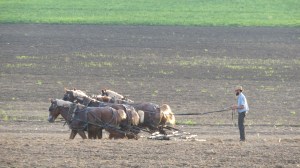
Dad would also stop along the way to photograph colorful landscapes, or just to enjoy the view. Sometime later, Mom would produce a watercolor that vividly depicted the same scene.
I often ponder those excursions with Dad, noting how ironic it is that my wife and I settled in Holmes County. We made it our home, raised our children here, began and ended our careers here.
In the summer, I sit on the back porch eating heirloom tomatoes and drinking fresh mint iced tea while our neighbor and his circle of family and friends gather wheat shocks on a hot, sticky afternoon. Undeterred by my presence, hummingbirds zoom over my head to the feeder.
In the winter, American Goldfinches, Northern Cardinals, Red-bellied Woodpeckers, Eastern Bluebirds and White-crowned Sparrows consume the seeds provided for them. A whoosh of wings announces a sneak attack by the resident Cooper’s Hawk, attempting to snag a snack, too.
In the spring, I watch with wonder as maple leaves unfurl ever so slowly. Yet it seems one week the trees are bare, and the next I’m under their shade.
I’ve never been to New Hampshire or Vermont to behold their fine fall colors of picture postcard scenes where hardwoods surround pristine, quaint villages. I intend to go someday. This fall, however, I’ll enjoy the equally colorful pallets around Charm, Beck’s Mills, Killbuck, Glenmont, Trail and Beechvale.
As pretty as our area is, its hardy people, though humanly and humbly imperfect, make it even more attractive. My wife and I are grateful for friends and neighbors who reside and work in and about our bucolic habitat. It’s a privilege to be among them.
Holmes County wasn’t the only enticing rural area our family visited on those trips long ago. But it was a favorite. I never dreamed I would end up living all of my adult life here, rooted to its rich, productive soils, and intertwined with its industrious, ardent inhabitants.
I tell people that I was born and raised in Canton, Ohio, but I grew up in Holmes County. Now you know why.
© Bruce Stambaugh 2014
Nature & Wildlife's Beauty and Behavior Through My Lens
A Sustainable Ethnographic Travel Blog From India
Artist and nature journalist in the Shenandoah Valley of Virginia.
Photographer Of Life and moments
Personal Blog
Art is the only way to run away without leaving home. -Twyla Tharp
Writing generated from the rural life
writer. teacher. podcast cohost.
El amor cruza fronteras / Love crosses borders
You must be logged in to post a comment.